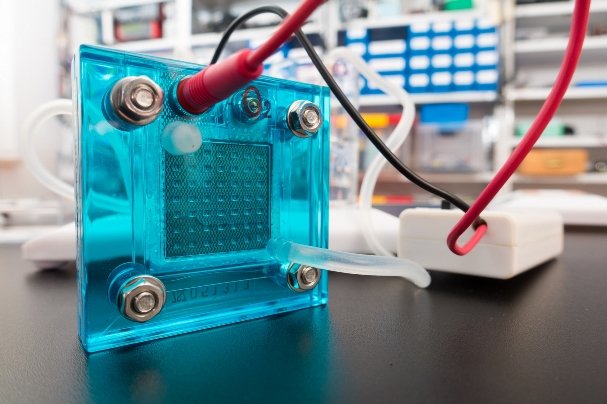Amir Kabir University researcher Mehdi Sadrjahani carried out a study called “investigation of ionic conductivity in ion exchange membrane based on SPEEK (Polyetheractone Sulfonated) nano-life structures with applicability in fuel cells” which, he says, addresses energy and environmental crises.
Sadrjahani referred to the energy crisis and said that using natural resources increases environmental damage. He added that burning up fossil fuels leads to climate change and increase in global temperature and added “fuel cells can create clean energy. This electro-chemical device transforms energy into water, a process that turns it into an environment-friendly technology.”
He said that one of the most important parts in any fuel cell is the proton exchange membrane which is known as the heart of the cell and added “proton exchange membrane serves as a base for conducting Proton (+H ions) and dividing the reactors within the cell. Its high performance plays an important role in increasing the energy efficiency of fuel cells.”
He said that his study has taken a major step in improving the conductivity of Proton in proton exchange membranes adding that among Nano-scale materials, Nano-fiber can serve as a suitable basis for conducting protons. He stressed the fact that using electrospinning, Nano-fiber can be produced with control over its morphology, its order in a three-dimensional structure and its constituent parts.
“Nano-life structures with multiple random and parallel Nano-fiber designs on the membrane surface were assessed and modelled based on the electrospun Nano-fiber sulfated polyetheretherketone (SPEEK) with the ability to conduct the developed proton,” he added.
The main purpose of the study was to improve the performance of proton conductivity in proton exchange Nano-life membranes. Research findings show that the parallel structure of Nano-life conducting protons within the three-dimensional structure of the membrane has a positive effect on proton conductivity.
Sadrjahani referred to one of the findings and added “increase in paralleling Nano-life in the three-dimensional structure led to the improvement by 67% of proton conductivity compared to the random model."
According to this researcher, the membrane has an appropriate level of proton conductivity (98.68 ms/cm) so it can be used in fuel cells and compete with the commercial Nafion membrane.
BS/4186145


























Your Comment